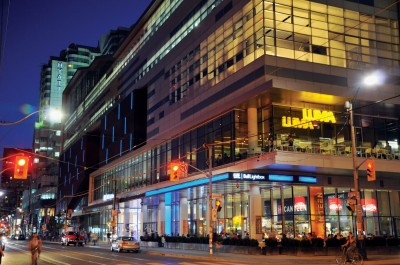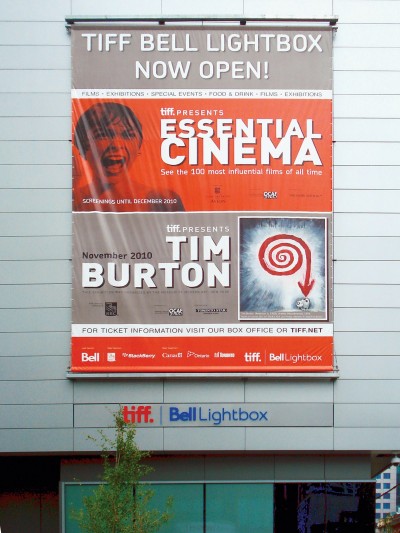By Udo Schliemann
It took almost 40 years to establish a dedicated venue in Toronto for world-class cinema. What began in 1976 as the Festival of Festivals and was later renamed the Toronto International Film Festival (TIFF) finally found a permanent home in late 2010 when TIFF Bell Lightbox opened at the corner of King and John Streets, within the city’s downtown entertainment district but off the beaten path of other commercial movie-screening facilities.
The five-storey, 13,935-m2 (150,000-sf) building was conceived by Kuwabara Payne McKenna Blumberg Architects (KPMB Architects), whose own offices are just across the street, on another corner of the same intersection. Their work on the Lightbox, built by PCL Constructors Canada, has since gone on to win a number of architectural awards.
As TIFF’s new year-round home made its debut during the 2010 festival, signage was an integral part of welcoming visitors from Toronto and around the world into a completely new environment and ensuring large events went smoothly. This system was provided by Gottschalk+Ash International (G+A), a Toronto-based environmental graphic design (EGD) firm (which soon thereafter merged with Entro Communications, another EGD firm in the city, to form Entro | G+A).
A rising star
Plans for the new building were first revealed in 2003, but construction only began in 2007. There had long been a need for a large-scale facility of this type. In the first year of the Festival of Festivals, 35,000 fans watched 127 films from 30 countries. In 2010, by way of comparison, TIFF featured 339 films from 59 countries and its audience reached 365,000. So, not only had the number of screenings increased, but the audience had become more than 10 times larger.
In response to this need, the Daniels Corporation—a real estate developer—joined with the Reitman family—which includes two film directors, Ivan and his son Jason, and donated the land—to form the King and John Festival Corporation (KJFC), which in turn worked to develop the new building dedicated solely to film.
In addition to serving as the centre of TIFF’s annual series of gala screenings, the facility provides a meeting place throughout the year for film industry professionals, educators and cinephiles from around the world. It is home for all of TIFF’s other existing programs, including New Releases, Cinematheque, Kids, Higher Learning and Reel Talk screenings, along with its film reference library. And it has supported a wide range of new initiatives and exhibits and hosted both community and industry events.
The Lightbox houses five public cinemas with 1,300 seats, two galleries, three learning studios, a centre for students and scholars, two restaurants and an event space managed by Oliver & Bonacini (O&B), a lounge and TIFF administrative offices. In the summer months, the outdoor terrace becomes another venue for parties and events, providing a long view east over King Street and the city’s downtown skyscrapers.
Visual effects
After KPMB Architects won a competition to design the new building, they developed a façade that would provide visual clues for what happens inside. These include exposed cinema boxes projecting out from the building and accentuated in black with vertical bars of light-emitting diodes (LEDs) in changing colours.







